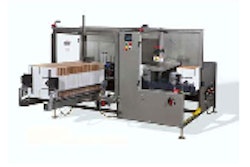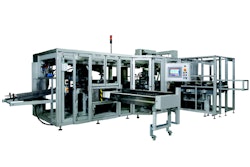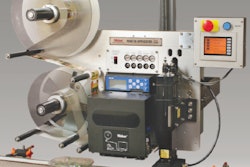Petroleum-based plastic packaging (hereafter, plastic packaging) has taken hits over its sustainability, or as its detractors claim, its lack there of. Any derivative of oil is vulnerable to attacks regarding carbon footprint; however, it doesn’t follow that all such attacks are equally justifiable.
Indeed, some of the lambasting of plastic packaging is based on misinformation, misconception, and mischaracterization. Members of the plastic packaging value- supply chain should be devoted to optimizing plastics’ sustainability; but, since perception is reality, they also should be devoted to factually educating the public.
Despite vilifications, petroleum-based plastics will remain a major packaging choice, because no alternative delivers the same cost-effective performance, not even those that are classified as polymers, i.e. the bioplastics and the oxo-degradables. That’s not a knock against those two; to the extent that they can prove their viability, they enrich the materials mosaic. Nonetheless, they can only aspire to niche applications, and neither one nor both in combination will displace petroleum-based plastics.
Given that plastic packaging will remain a mainstay for the foreseeable future, it makes good business sense for supporters to make the case that such packaging is not a bane but a benefit. Yet that has not been undertaken, at least not at the coordinated, value-chain-wide level needed.
Years ago, a television advertisement, sponsored by a plastics industry trade association, challenged the viewer to imagine a world without plastics. To underscore that challenge, the ad showed a variety of products—ranging in nature from convenience to critical—then had them dissolve from view. An advertisement campaign of that scope, but directed at sustainability, is needed now, and should be supplemented by campaigns on the users’ side.
Some user industries wherein plastic packaging dominates, such as health & beauty, household chemicals, and non-alcoholic beverages, should sponsor campaigns through their own industry trade associations. But, regardless of industry and product category, any CPGC that uses plastic packaging should devise communications that support that usage.
Increasingly, CPGC’s are detailing their sustainability initiatives not only in their annual reports but also on their websites, for greater access. That’s all to the good, and would be more so, if, for example, initiatives vis-á-vis plastic packaging are presented, while being careful not to unintentionally imply that there is something inherently evil about the materials.
Additionally, there’s a role to be played by retailers, especially the big-box stores that have ascended to the leadership position in the value-supply chain. The rationale comes down to this: for any retailer selling goods packaged in plastics, either the retailer’s stance is that plastics provide benefits worthy of their shelf placements or the retailer is being contradictory. Since any retailer would rather have the former said of it than the latter, it is a matter of self-interest to be part of a coordinated effort to present plastic packaging in a fair, balanced light.
Oil’s well that ends well
A cornerstone of the education campaign should be to disabuse the public of the notion that plastics constitute an additional depletion of oil, a non-renewable resource; that is to say, that in addition to the oil that is extracted for fuels, other quantities are extracted solely for the production of plastics. The truth is that plastics are produced from naphtha, a by-product of oil refining. If naphtha had no secondary uses—plastics or otherwise—it would be industrial waste, posing its own disposal problems.
It should not be beyond collective minds, therefore, to find appropriate language to explain to the public the derivative nature of plastics, perhaps by analogy. One such analogy is the conversion of trees into lumber, a use of a natural resource that produces sawdust as a by- product, which, in turn is used as a principle component in the production of manufactured fireplace logs. With logs from sawdust, as with plastics from naphtha, the concept of added value is present and demonstrable.
The initiative is needed because some informational sources refer to the number of barrels of oil consumed by the production of plastics. Although technically correct, such references can be misguiding if they don’t speak to the by-product issue and if they don’t distinguish between oil that produces the feedstock and oil that fuels the manufacturing process.
Put it in perspective
Their ever-presence notwithstanding, plastics consume a small percent of the world’s oil production. Granted, that doesn’t change the fact that oil reserves are finite and non-renewable, but it does lend itself to some useful insights. For example, as alternative energy sources come on-stream and reduce reliance on oil as a fossil fuel, oil reserves, consequently, will last longer. And since plastics are a small percent of oil production, even a considerable drop in that production still can fulfill the requirements of plastics.
Don’t greenwash
There’s no denying that plastics have an impact on the environment, from sourcing, to manufacturing, to disposal; additionally, some plastics have toxic properties. Members of the value-supply chain should be open about those facts but should move quickly into a discussion about what is being done to improve the sustainability of plastics packaging. Success should be presented in objectively applied metrics, such as Life-Cycle Assessment or Cost-Benefits Analysis.
But those metrics can be manipulated, and the temptation to fudge in one’s own favor should be resisted; for, aside from being dishonest, it’s foolishly risky. There are too many monitors, whether of the official or self-appointed variety, for any type of greenwashing to go undetected. Once credibility is sacrificed, it’s difficult to reclaim.
Recycling to the rescue
Recycling is the sustainability strategy most familiar to the public, predating by decades the sustainability era. The majority of consumers are familiar with the symbol of the triangle-of-arrows, number inside, designating the type of plastic. Recyclability is plastic packaging’s greatest asset and it is underleveraged.
Relevant, too, is that surveys consistently show that the majority of consumers equate their environmental responsibilities with recycling; in other words, consumers don’t want to be asked to sacrifice beyond recycling (a sobering insight for marketers who are betting on unsubstantiated hopes of consumers’ willingness to pay price premiums for green products).
A more coordinated effort needs to be directed at portraying plastic packaging as part of the solution rather than the cause of the problem. Yes, too much plastic packaging ends up in landfills and as litter; however, those issues are more linked with infrastructure and public behavior respectively than with flaws in the materials.
As for sustainability, the term is not well understood by consumers; hence, they don’t know that it represents the integration of corporate, societal, and environmental concerns. This should be another aspect of the education initiative: to explain that plastics packaging is not an unmanageable menace to the environment, but rather is central to a corporation’s ability to bring quality, convenient, value-added products to society--cost-effectively.
At the item level
Ideally, making the case for the sustainability of plastic packaging should extend to the point-of-purchase. The question is, how should the individual package announce its environmental contribution in a manner that motivates purchase? Mention already has been made of the recycling symbol. Beyond that, two other practices are worthy of discussion.
One is various blends embodying recyclate, bio, etc. The other is source-reduction. Either or both can require decisions about disclosures of percentages, trademarks, certifications, and symbols & logos, among others.
In it together
Anyone who is even tangentially involved with packaging should take the challenge posed by the aforementioned ad campaign and imagine life without plastics. It’s not necessary for plastics to constitute one’s primary package, either. Think of shrink and stretch films, closures, and labels, and our common vested interest becomes obvious.
It’s not inconceivable that some day materials science will produce functional, aesthetic replacements for plastic packaging, but that day might loom far out on the horizon. Meanwhile, in addition to recycle, reduce, and reuse, another “R” should be assigned to plastic packaging: respect.
Indeed, some of the lambasting of plastic packaging is based on misinformation, misconception, and mischaracterization. Members of the plastic packaging value- supply chain should be devoted to optimizing plastics’ sustainability; but, since perception is reality, they also should be devoted to factually educating the public.
Despite vilifications, petroleum-based plastics will remain a major packaging choice, because no alternative delivers the same cost-effective performance, not even those that are classified as polymers, i.e. the bioplastics and the oxo-degradables. That’s not a knock against those two; to the extent that they can prove their viability, they enrich the materials mosaic. Nonetheless, they can only aspire to niche applications, and neither one nor both in combination will displace petroleum-based plastics.
Given that plastic packaging will remain a mainstay for the foreseeable future, it makes good business sense for supporters to make the case that such packaging is not a bane but a benefit. Yet that has not been undertaken, at least not at the coordinated, value-chain-wide level needed.
Years ago, a television advertisement, sponsored by a plastics industry trade association, challenged the viewer to imagine a world without plastics. To underscore that challenge, the ad showed a variety of products—ranging in nature from convenience to critical—then had them dissolve from view. An advertisement campaign of that scope, but directed at sustainability, is needed now, and should be supplemented by campaigns on the users’ side.
Some user industries wherein plastic packaging dominates, such as health & beauty, household chemicals, and non-alcoholic beverages, should sponsor campaigns through their own industry trade associations. But, regardless of industry and product category, any CPGC that uses plastic packaging should devise communications that support that usage.
Increasingly, CPGC’s are detailing their sustainability initiatives not only in their annual reports but also on their websites, for greater access. That’s all to the good, and would be more so, if, for example, initiatives vis-á-vis plastic packaging are presented, while being careful not to unintentionally imply that there is something inherently evil about the materials.
Additionally, there’s a role to be played by retailers, especially the big-box stores that have ascended to the leadership position in the value-supply chain. The rationale comes down to this: for any retailer selling goods packaged in plastics, either the retailer’s stance is that plastics provide benefits worthy of their shelf placements or the retailer is being contradictory. Since any retailer would rather have the former said of it than the latter, it is a matter of self-interest to be part of a coordinated effort to present plastic packaging in a fair, balanced light.
Oil’s well that ends well
A cornerstone of the education campaign should be to disabuse the public of the notion that plastics constitute an additional depletion of oil, a non-renewable resource; that is to say, that in addition to the oil that is extracted for fuels, other quantities are extracted solely for the production of plastics. The truth is that plastics are produced from naphtha, a by-product of oil refining. If naphtha had no secondary uses—plastics or otherwise—it would be industrial waste, posing its own disposal problems.
It should not be beyond collective minds, therefore, to find appropriate language to explain to the public the derivative nature of plastics, perhaps by analogy. One such analogy is the conversion of trees into lumber, a use of a natural resource that produces sawdust as a by- product, which, in turn is used as a principle component in the production of manufactured fireplace logs. With logs from sawdust, as with plastics from naphtha, the concept of added value is present and demonstrable.
The initiative is needed because some informational sources refer to the number of barrels of oil consumed by the production of plastics. Although technically correct, such references can be misguiding if they don’t speak to the by-product issue and if they don’t distinguish between oil that produces the feedstock and oil that fuels the manufacturing process.
Put it in perspective
Their ever-presence notwithstanding, plastics consume a small percent of the world’s oil production. Granted, that doesn’t change the fact that oil reserves are finite and non-renewable, but it does lend itself to some useful insights. For example, as alternative energy sources come on-stream and reduce reliance on oil as a fossil fuel, oil reserves, consequently, will last longer. And since plastics are a small percent of oil production, even a considerable drop in that production still can fulfill the requirements of plastics.
Don’t greenwash
There’s no denying that plastics have an impact on the environment, from sourcing, to manufacturing, to disposal; additionally, some plastics have toxic properties. Members of the value-supply chain should be open about those facts but should move quickly into a discussion about what is being done to improve the sustainability of plastics packaging. Success should be presented in objectively applied metrics, such as Life-Cycle Assessment or Cost-Benefits Analysis.
But those metrics can be manipulated, and the temptation to fudge in one’s own favor should be resisted; for, aside from being dishonest, it’s foolishly risky. There are too many monitors, whether of the official or self-appointed variety, for any type of greenwashing to go undetected. Once credibility is sacrificed, it’s difficult to reclaim.
Recycling to the rescue
Recycling is the sustainability strategy most familiar to the public, predating by decades the sustainability era. The majority of consumers are familiar with the symbol of the triangle-of-arrows, number inside, designating the type of plastic. Recyclability is plastic packaging’s greatest asset and it is underleveraged.
Relevant, too, is that surveys consistently show that the majority of consumers equate their environmental responsibilities with recycling; in other words, consumers don’t want to be asked to sacrifice beyond recycling (a sobering insight for marketers who are betting on unsubstantiated hopes of consumers’ willingness to pay price premiums for green products).
A more coordinated effort needs to be directed at portraying plastic packaging as part of the solution rather than the cause of the problem. Yes, too much plastic packaging ends up in landfills and as litter; however, those issues are more linked with infrastructure and public behavior respectively than with flaws in the materials.
As for sustainability, the term is not well understood by consumers; hence, they don’t know that it represents the integration of corporate, societal, and environmental concerns. This should be another aspect of the education initiative: to explain that plastics packaging is not an unmanageable menace to the environment, but rather is central to a corporation’s ability to bring quality, convenient, value-added products to society--cost-effectively.
At the item level
Ideally, making the case for the sustainability of plastic packaging should extend to the point-of-purchase. The question is, how should the individual package announce its environmental contribution in a manner that motivates purchase? Mention already has been made of the recycling symbol. Beyond that, two other practices are worthy of discussion.
One is various blends embodying recyclate, bio, etc. The other is source-reduction. Either or both can require decisions about disclosures of percentages, trademarks, certifications, and symbols & logos, among others.
In it together
Anyone who is even tangentially involved with packaging should take the challenge posed by the aforementioned ad campaign and imagine life without plastics. It’s not necessary for plastics to constitute one’s primary package, either. Think of shrink and stretch films, closures, and labels, and our common vested interest becomes obvious.
It’s not inconceivable that some day materials science will produce functional, aesthetic replacements for plastic packaging, but that day might loom far out on the horizon. Meanwhile, in addition to recycle, reduce, and reuse, another “R” should be assigned to plastic packaging: respect.

























